Rejuvenation and Scarcity
The discussion of increased lifespans through medical and technological methods of addressing the various processes of aging raises the concern that this could lead to a lack of resources and result in conflict and suffering.
The argument suggests that we will run out of resources if we develop the technology to treat age-related diseases. Proponents of this line of thinking believe that food, water, energy and other resources will dwindle in such a world and that it would lead to global conflict.
However, such arguments often do not take into account progress in food production, water filtration, renewable energy and other technological advances that could potentially offset these problems.
Let us look closely at the data and see if these concerns are warranted.
Won’t we run out of space?
In all projected future scenarios for Africa, its population will continue to grow. Today, there are 7.4 billion people on Earth. We are used to thinking that this is already too much, but let’s see how much space on Earth we humans actually take up. In 2012, the team of the project “Per Square Mile” led by Tim de Chant produced an infographic showing how big a city would have to be to house the world’s 7 billion people.
The city limits change drastically depending on which real city is used as the model and what its population density is, but this still gives us an idea of how much of our beautiful planet is really inhabited and how much spare space we still have.
If the projection of population growth by the United Nations is correct, in the next 84 years, there will be about 11 billion people. This means that if all of humanity were concentrated in a land area with a population density similar to New York, it would, at most, occupy the size of 3 US states by 2100.
2012 2100

Fig 1. 7 bln city with population density of New York/11 bln city with the same population density. From the “Per Square Mile” project by Tim de Chant. Note: the picture at right is modified by the article authors to illustrate the potential growth. The state of Texas is about 700,000 square kilometers, which corresponds to about 7 billion people. The states of Texas, New Mexico (about 315,000 km^2), and Louisiana (about 135,000 km^2) combined represent 1,150,000 square kilometers, which corresponds to about 11.5 billion people by 2100.
Does this mean that population growth is not an issue? From the point of view of the space we humans need, likely so. But our species’ survival is dependent on many other factors, such as the environment necessary to produce our food and other goods.
Are we going to run out of food?
It is about fifty years too late to be concerned about extensive population growth and its consequences, such as famine, because the highest birth rate and population growth was observed from the 1960s to the 1980s. Our population grew by one billion people in just 14 years (going from 3 to 4 billion); however, no big societal or economic challenges were encountered.
Moreover, the next two billion increases in population appeared in 13 and 12 years, respectively [1], but once again, there was no following famine caused by a deficiency of global food production. The famines of the second half of the 20th century were provoked by how the food was distributed. Factors such as administrative incompetence of local governments, wars, and natural disasters happening several years in a row played the greatest role in creating famine during this period [2].
Today, global society is taking measures to eradicate hunger worldwide by 2030. This is very likely to be the case, as the number of people suffering from hunger is decreasing rapidly. In 2012, it was one in eight, while in 2015, it was already one in nine, which corresponds to 795 million people. This is the 2017 Hunger Map by the World Food Program illustrating the progress.
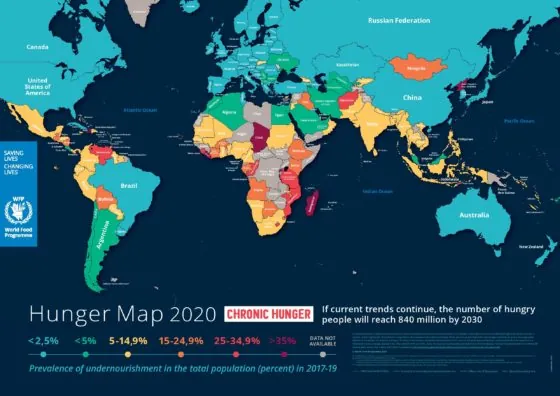
Fig 2. World Hunger map 2020 by the WFP
If we compare the food supply in 1965 and in 2007, we can clearly see that overeating is more of a global issue than undernourishment, as in most countries, the calorie intake has grown significantly. This could not have happened if our society were suffering from food underproduction, as the food would not be available to overeat, and problems such as obesity would not be so prevalent.
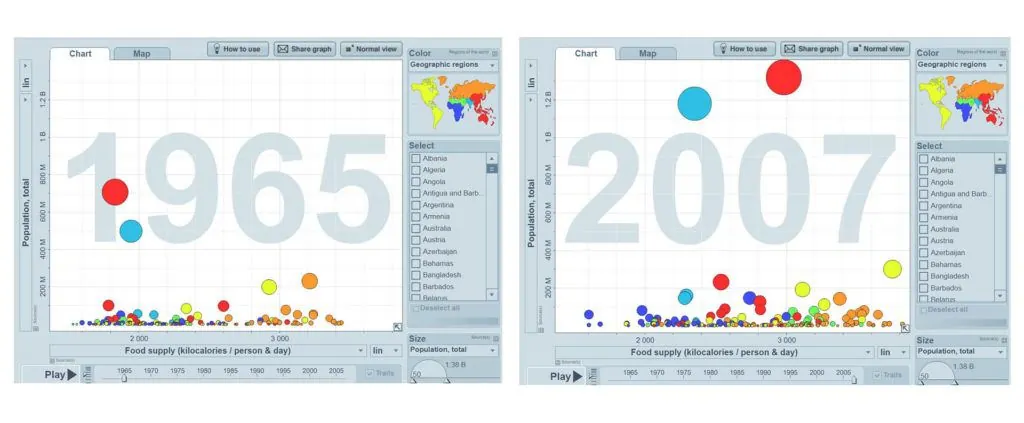
Fig 3. Food supply 1965 vs 2007 Source: Gapminder statistics
Astoundingly, this means that a population explosion has passed relatively unnoticed, all thanks to the “Green Revolution” of rapid development of new agriculture techniques, such as fertilizers, irrigation and selection.
New technologies for increased food production
The concern that there will be a food shortage in the future neglects further technological advances, such as aquaponics, hydroponics, aeroponics, vertical farming, 3D-printed housing, algae farms, and many other technologies that could provide enough food for all.
The need for more food production represents an excellent opportunity for entrepreneurs, so it is unlikely that the development process of new technologies would suddenly stop, especially taking into account the objective need for rapid changes due to environmental issues.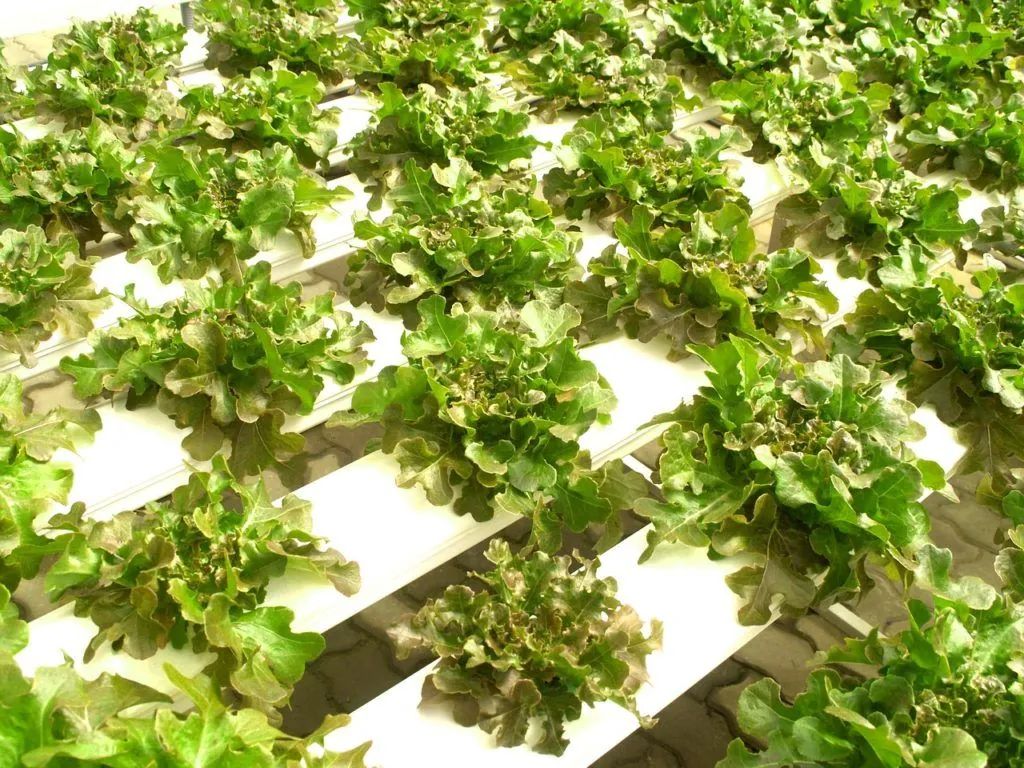
According to a report by the Food and Agriculture Organization of the United Nations, “Livestock’s long shadow”, in 2006, livestock represented the biggest of all anthropogenic (i.e., due to human activity and with potentially harmful side effects) land uses, taking up to 70% of all agricultural land and 30% of the ice-free terrestrial surface of the planet [3].
Scientists admit that while it is still possible to expand agricultural land in some countries in accordance with the increasing need for food, this expansion cannot go beyond the limits of carrying capacity of our planet. The report states that livestock is responsible for about 18% of the global warming effect, 9% of total carbon dioxide emissions, 37% of methane, and 65% of nitrous oxide. Water use for livestock represents about 8% of all human water use (7% of this being used for feed irrigation).
New technologies can provide solutions for the numerous environmental issues related to traditional farming. For instance, hydroponics offers around 11 times higher yields while requiring 10 times less water than conventional agriculture [4]. The energy needs of a hydroponic facility are much higher (up to 80 times more), but thanks to emerging clean renewable energy technologies, this increased demand may not be an issue [5].
Meat without cattle farming
Animal farming represents the major source of land degradation, water expenditures, and pollution, and there is a movement to reduce animal suffering. Today, there are many companies engaged in the creation of lab-grown meat, animal-free dairy products, and hen-free eggs. Let’s see what happens in the lab-grown meat production field.
The first burger with lab-grown meat was created back in 2012 and has cost about $330,000, which was used to carry on the corresponding studies and to produce enough meat so that it could be cooked and tasted. The chief scientist behind the first cultured hamburger, Professor Mark Post of Maastricht University, is dedicated to find a way to reduce the costs of production in order to make the meat affordable to everyone. It is expected to enter the market in the next few years at a price of $80 per kilogram.
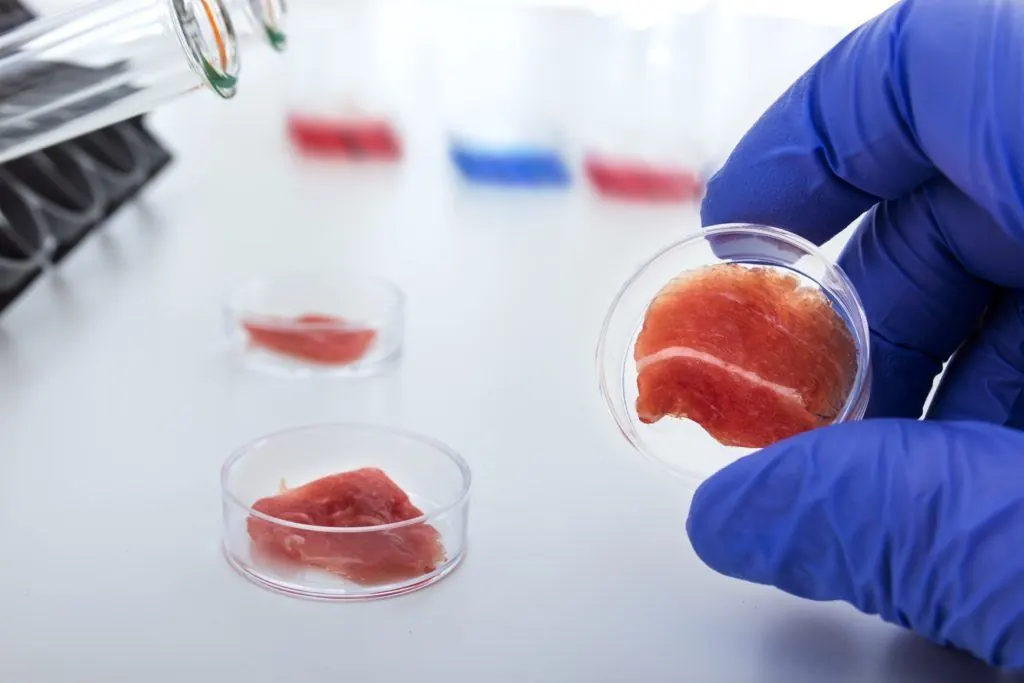 The team behind the project believes that cultivated meat could be a viable solution for the food crisis and could satisfy the world’s growing demand for meat without animal suffering and harm to the environment. This is only one example.
The team behind the project believes that cultivated meat could be a viable solution for the food crisis and could satisfy the world’s growing demand for meat without animal suffering and harm to the environment. This is only one example.
Startups like Super Meat and Memphis Meats are working on the same problem. Making a laboratory into a farm is beneficial in many ways, including less pollution and fewer greenhouse gas emissions (mostly caused by animal digestion processes).
Sterile conditions in the lab lead to decreased risk of infections and allow the exclusion of antibiotics from the process of meat production. Lab-grown meat can be designed to contain less fat or even fats and proteins with new characteristics such as adding essential omega fatty acids.
With less space necessary for laboratory meat production and no waste, it will be possible to ensure disseminated local production in order to cut transportation time and reduce the use of preservatives. The same system can be used to grow fish, shrimp, and frog meat as well, thus reducing the impact of fishing and fish-farming on the environment.
The recently created vegan ‘Bloody Burger’ by Impossible Foods “uses 95% less land, 74% less water and emits 87% fewer greenhouse gas emissions than its cattle-derived counterpart”. By concentrating on the heme molecule, the mixture apparently “looks like meat, tastes like meat and sizzles like meat“.
These solutions are also great from an ethical point of view, as this technology can reduce animal suffering. The rate of transition to these new ways of animal product creation is widely dependent on political will and social support. The main trade-off for implementing this new technology is the same as with hydroponics: more energy usage [6].
GMO crops
Another solution to global demand and a path to a “second Green Revolution” is the use of genetically engineered crops designed to produce greater yields, resist diseases and grow in conditions not favorable to organic crops.
There is currently a lot of debate about the use of GMO crops to improve yields and keep pace with food demands globally, and some argue that organic crops are superior environmentally and are better nutritionally. However, if we examine the data, we will see that this is far from the case and that this is perpetuating agricultural myths [7].
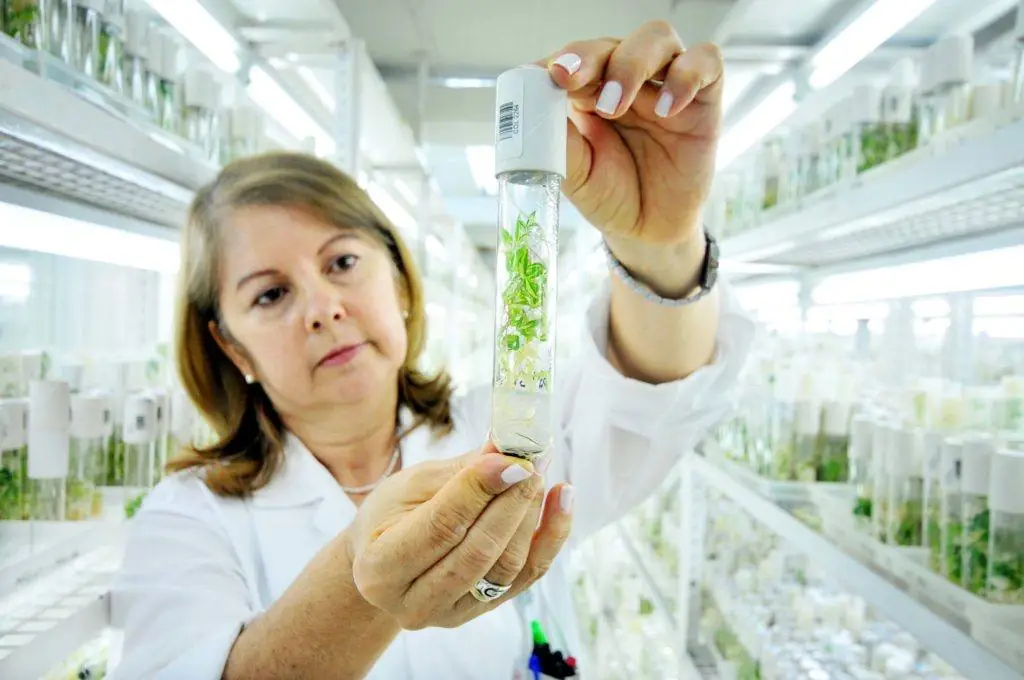 GMO critics often claim that organic farming practices use less synthetic pesticides that have been found to be ecologically damaging [8]. However, factory organic farms also use their own range of natural pesticides that are still damaging [9].
GMO critics often claim that organic farming practices use less synthetic pesticides that have been found to be ecologically damaging [8]. However, factory organic farms also use their own range of natural pesticides that are still damaging [9].
To add to the problem, they refuse to endorse technologies that might reduce or eliminate the use of these altogether, such as genetic modification to make them resistant to insects and other pests. In comparison, GMOs have the potential to boost crop yields, increase nutritional value, and generally improve farming practices while reducing synthetic chemical use.
For example, there are sweet potatoes being engineered to be resistant to a virus that currently decimates the African harvest every year; this could feed millions in some of the poorest nations in the world if their crops did not suffer from this blight [10].
Science has created carrots high in calcium to fight osteoporosis and tomatoes high in antioxidants. In fact, it is as important what we put into a crop as what we take out.
Potatoes can be modified so that they do not produce high concentrations of toxic glycoalkaloids, and nuts can be modified to lack the proteins which cause allergic reactions. Despite this, organic proponents refuse to even give GMOs a fair chance, to the point of hypocrisy.
For example, organic farmers apply Bacillus thuringiensis (Bt) toxin (a small insecticidal protein from soil bacteria) on their crops every year, and they have for decades. It’s one of the most commonly used organic pesticides by organic farmers and is not harmful to mammals. Yet, when genetic engineering is used to place the gene encoding the Bt toxin into a plant’s genome, the resulting GMO plants are then vilified by the same people willing to spray the exact same toxin that the gene encodes for over the exact same species of crop!
Nutritionally, the FDA has concluded there is no significant difference in nutrition between organic and GMO produce and considers GMO foods safe for human consumption despite the pressure from certain groups suggesting that they are not. The FDA concludes, “Credible evidence has demonstrated that foods from the GE plant varieties marketed to date are as safe as comparable, non-GE foods.” Additional studies also confirm this [11].
The World Health Organization also concludes that GM foods “currently available on the international market have passed safety assessments and are not likely to present risks for human health. In addition, no effects on human health have been shown as a result of the consumption of such foods by the general population in the countries where they have been approved”.
Ecologically, GMOs are a better solution, as it reduces the amount of toxin being used and thus leaching into the surrounding environment and waterways. Other GMOs have similar goals, like making crops tolerant to occasional flooding, which can replace herbicide use as a means of killing weeds. If the goal is to protect the environment, then why not incorporate the new technologies that help us do that?
The real reason organic farming isn’t more green than conventional is that, while it may be better for local environments on a small scale, organic farms produce much less food per per mile than conventional ones. Organic farms produce around 80% of the products of a conventional farm [12], with some studies showing yields as low as 50% less!
Right now, there are millions of people suffering from hunger and malnutrition, and many of those will die from it [13]. If we were to switch to entirely organic farming, the number of people suffering would increase by 1.3 billion, assuming we use the same inefficient amount of land we use now for organic farming.
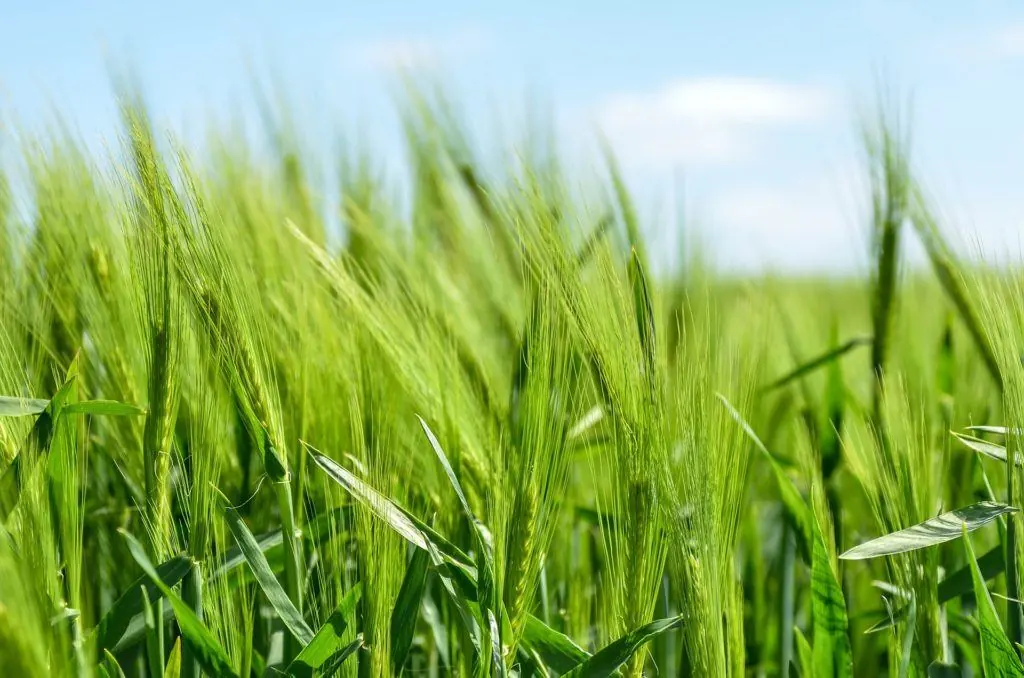 So, if we switched to all organic farming, further ecological damage would likely be caused by the creation of new farms and additional space for organic crops. This would cause the destruction of currently untouched habitats by ploughing over the wild habitats we have left, which would threaten wildlife. This is all due to the poor space/efficiency ratio of organic farming.
So, if we switched to all organic farming, further ecological damage would likely be caused by the creation of new farms and additional space for organic crops. This would cause the destruction of currently untouched habitats by ploughing over the wild habitats we have left, which would threaten wildlife. This is all due to the poor space/efficiency ratio of organic farming.
So far, we have already cleared more than 35% of the Earth’s ice-free land surface for agriculture, an area 60 times larger than the combined area of all the world’s cities and suburbs. Barring the last ice age, nothing has been more disruptive to the planet’s ecosystem and its inhabitants than agriculture.
What would happen to what’s left of our planet’s wildlife habitats if we needed to remove another 20% or more of the world’s fertile land to accommodate for organic farming? Unfortunately, until organic farming can rival the production output of conventional farming and GMO crops, its ecological cost due to the need for space will be devastating.
As bad as the pesticides and fertilizers polluting the world’s waterways from conventional agriculture are, it’s better, ecologically speaking, than destroying those key habitats altogether.
This is not to say that there’s no hope for organic farming; better technology could help to overcome the production gap, allowing organic methods to produce on par with conventional agriculture. If that did occur, then organic agriculture would become a lot more ecologically sustainable.
However, to present organic farming as the be-all and end-all of agriculture is a huge misconception and perpetuates the agricultural myths that lead to hatred of GMOs without sufficient understanding of the scientific and ecological reasons for using them.
But what about water?
While our world is often called the blue planet because most of its surface is covered with water, freshwater is only about 3% of this amount. Up to 90% of the Earth’s fresh water is represented by polar ice caps. The main sources of fresh water available to use are groundwater (springs, boreholes) and surface water (rivers, lakes), while atmospheric water is much harder to use.
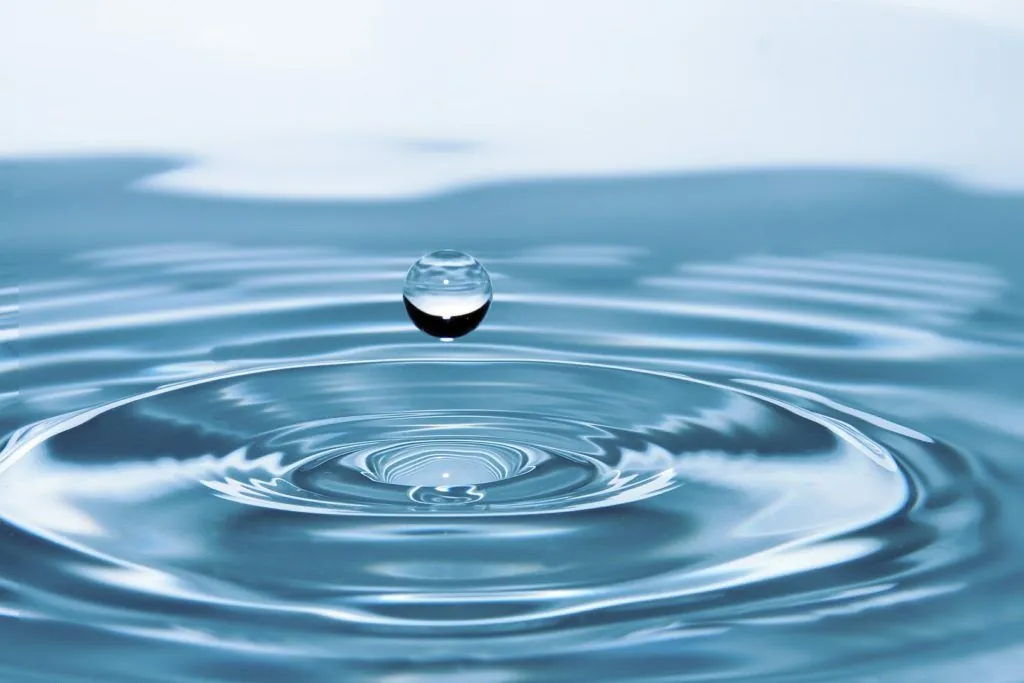 There has been significant progress regarding access to drinking water. During the Millennium Development Goals period (1990-2015), it is estimated that, globally, use of improved drinking water sources rose from 76 percent to 91 percent. 2.6 billion people have gained access to an improved drinking water source since 1990.
There has been significant progress regarding access to drinking water. During the Millennium Development Goals period (1990-2015), it is estimated that, globally, use of improved drinking water sources rose from 76 percent to 91 percent. 2.6 billion people have gained access to an improved drinking water source since 1990.
Improved drinking source means a source of water protected from external pollution causes, such as animals and bird droppings. Improved drinking sources, such as piped water, tubewells and boreholes, provide water that is safe to drink, while unimproved sources, such as rivers, lakes, and other sources open to external pollution, can be a threat to people’s health.
The MDG target of 88 percent was surpassed in 2010, and in 2015, 6.6 billion people used an improved drinking water source. There are now only three countries (all located in sub-Saharan Africa and Oceania) with less than 50 percent coverage, compared with 23 in 1990 [14].
However, the global population keeps growing, the need for food is increasing, and the current agricultural methods lead to a corresponding increase of water expenditures. Another challenge is climate change: as temperatures rise, many regions are facing unusual weather phenomena or are suffering from the aggravation of existing weather, such as floods and droughts – especially the latter.
There are two main ways to ensure water resources for the growing population:
- To save as much water as possible (by using hydroponics and other techniques that reduce evaporation instead of traditional farming; by using lab-grown meat instead of animal farming; by collecting and effectively cleaning sewage; by reducing water losses due to damaged pipelines or irrational water usage)
- To develop and implement new ways of fresh water production (desalination plants, water collection from the air and others).
A project in Israel is an example of how human creativity can solve the problem of water scarcity in a given country in just 10-20 years. Israel is located in a region with a subtropical Mediterranean climate, with long, droughty summers and relatively low precipitation during the winter. There are only few natural water sources (lakes and rivers), which Israel shares with its neighbors, but their capacities are used almost completely, which is leading to their exhaustion and the Dead Sea levels lowering by one meter every year.

In order to ensure effective agriculture, the country needs to use a significant amount of fresh water for irrigation. Despite the usage of advanced technologies (drip irrigation, water-retaining grounds), in 2004-2008, Israel was faced with drought, and it became clear that the natural water resources could not ensure stability anymore.
As a result, the government decided to invest in a desalination plant, and currently about 50% of Israel’s overall needs for fresh water are provided by five desalination plants located on the Mediterranean coast and providing enough fresh water for more than 4 million people.
Fresh water produced in Israel by desalination is also cheap (around $30 per household a month, similar to most US households). The technology has proven to be so efficient that the Israeli desalination company is now building several new plants in other countries to help them solve the water scarcity problem.
In California, a new desalination plant is going to provide about 7 percent of the drinking water needs for the San Diego region. If we built several thousand desalination plants of this capacity, it could fulfill the unmet fresh water needs of the global population completely.
It is planned to build more desalination plants in Israel, and some of them are going to deliver the byproduct of desalination – salt water – to the Dead Sea, to compensate the exhaustion of the rivers feeding it. This ambitious project includes the construction of a water-power plant, powered by a waterfall, to the Dead Sea. Furthermore, the technologies Israel is using to clean the sewage are so powerful that up to 86% of the water is recycled and brought back to be used for irrigation and other needs. The next leader in sewage recycling is Spain, with only 19% of sewage water recycled.
Israel is not the only country with a positive experience of desalination. From 2006 to 2012, after a period of consequent droughts, Australia brought six desalination plants online, investing more than $10 billion. There are plants in Bahrain, Japan, Saudi Arabia, China and many other countries.
This example is meant to show that there already is a number of technical solutions to the water problem. The question is whether there will be enough social support and political will to massively implement them and establish more rational and environment-friendly processes of fresh water production, consumption, and recycling.
Conclusion
Given the march of technology and that we are already well ahead of demand, it is highly unlikely that we will be running out of resources in the near future.
Literature
[1] United Nations, Department of Economic and Social Affairs, Population Division (1999). The World At Six Billion. ESA/P/WP.154.
[2] Gráda, C. Ó. (2007). Making famine history. Journal of Economic Literature, 45(1), 5-38.
[3] FAO, U., & Steinfeld, H. (2006). Livestock’s long shadow: Environmental issues and options. Rome:[sn].
[4] Barbosa, G. L., Gadelha, F. D. A., Kublik, N., Proctor, A., Reichhelm, L., Weissinger, E., … & Halden, R. U. (2015). Comparison of land, water, and energy requirements of lettuce grown using hydroponic vs. conventional agricultural methods. International journal of environmental research and public health, 12(6), 6879-6891.
[5] REN21. 2016. Renewables 2016 Global Status Report (Paris: REN21 Secretariat).
[6] Mattick, C. S., Landis, A. E., Allenby, B. R., & Genovese, N. J. (2015). Anticipatory Life Cycle Analysis of In Vitro Biomass Cultivation for Cultured Meat Production in the United States. Environmental science & technology, 49(19), 11941-11949.
[7] Hielscher, S., Pies, I., Valentinov, V., & Chatalova, L. (2016). Rationalizing the GMO Debate: The Ordonomic Approach to Addressing Agricultural Myths. International journal of environmental research and public health, 13(5), 476.
[8] Aktar, W., Sengupta, D., & Chowdhury, A. (2009). Impact of pesticides use in agriculture: their benefits and hazards. Interdisciplinary toxicology, 2(1), 1-12.
[9] Bahlai, C. A., Xue, Y., McCreary, C. M., Schaafsma, A. W., & Hallett, R. H. (2010). Choosing organic pesticides over synthetic pesticides may not effectively mitigate environmental risk in soybeans. PLoS One, 5(6), e11250.
[10] Qaim, M. (1999). The economic effects of genetically modified orphan commodities: projections for sweetpotato in Kenya. ISAAA.
[11] Dangour, A. D., Lock, K., Hayter, A., Aikenhead, A., Allen, E., & Uauy, R. (2010). Nutrition-related health effects of organic foods: a systematic review. The American journal of clinical nutrition, 92(1), 203-210.
[12] Mäder, P., Fliessbach, A., Dubois, D., Gunst, L., Fried, P., & Niggli, U. (2002). Soil fertility and biodiversity in organic farming. Science, 296(5573), 1694-1697.
[13] Fedoroff, N. V., & Cohen, J. E. (1999). Plants and population: Is there time?. Proceedings of the National Academy of Sciences, 96(11), 5903-5907.Unicef. (2015). Progress on Sanitation and Drinking-Water: 2015 Update and MDG Assessment. World Health Organization: Geneva, Switzerland.
[14] Unicef. (2015). Progress on Sanitation and Drinking-Water: 2015 Update and MDG Assessment. World Health Organization: Geneva, Switzerland.


